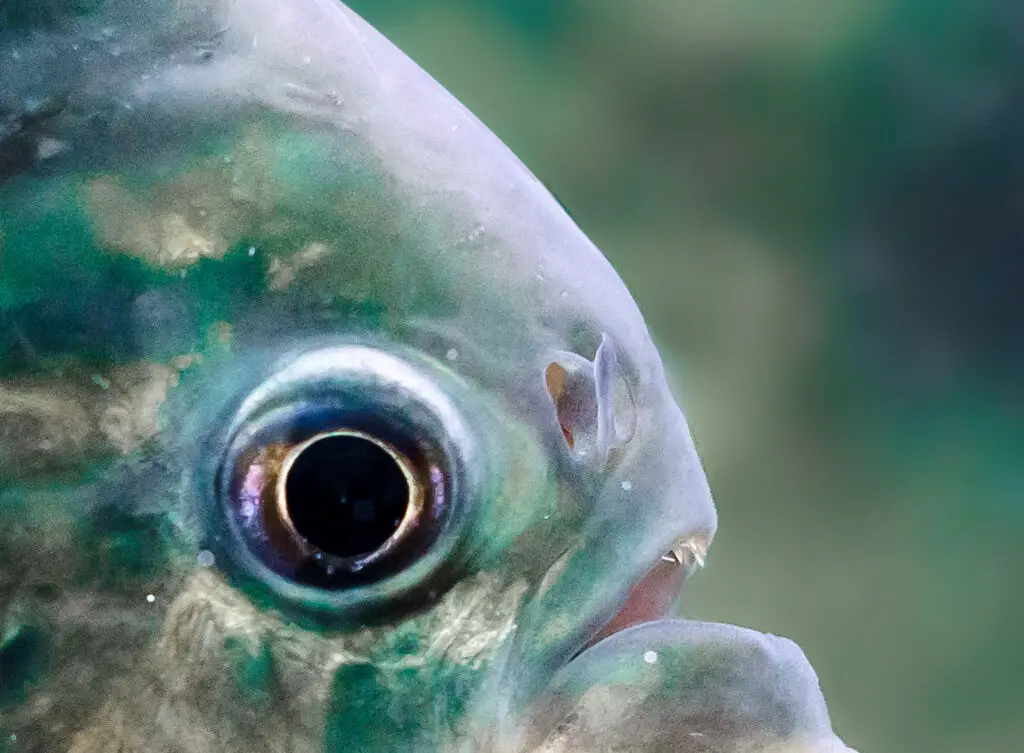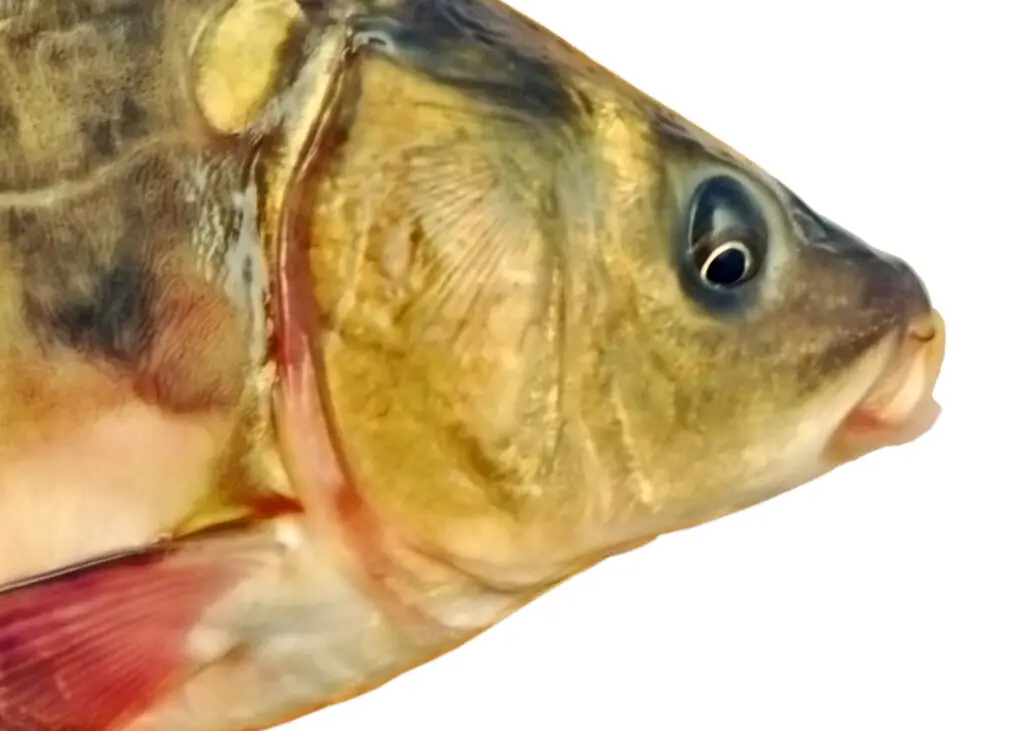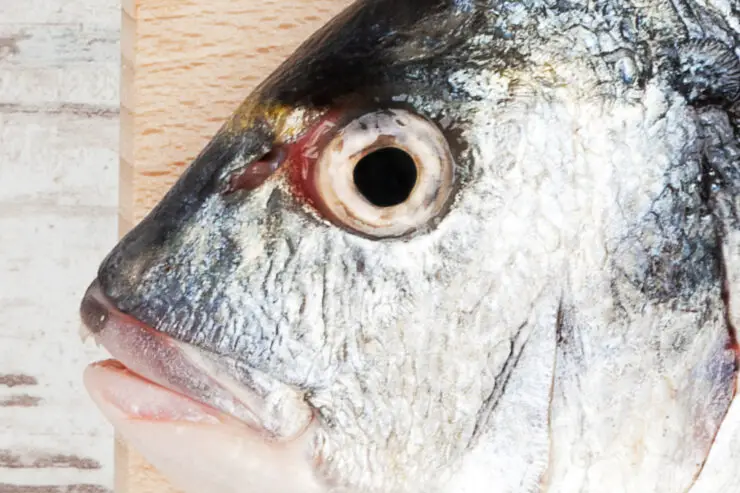As an Amazon Associate I earn from qualifying purchases. Please read the disclaimer for more info.
Have you ever heard of eating fish eyes? Have you ever wondered if they are safe to consume or what dishes you can eat them in?
Fish eyes are a surprisingly nutritious delicacy that is popular in many cultures around the world. They have a soft, moist texture and a subtly sweet taste—similar to snail caviar.
In this post, we’ll explore the history of fish eyes, their nutritional benefits, and tips for making them part of your next meal.
Related: Can You Eat Starfish?
Overview of Fish Eyes

Fish eyes are a larger part of the global food scene than you may imagine.
They are generally sold still intact with the whole fish, along with the fish head, or sold separately from your favorite fishmonger.
While they may initially seem unappetizing, many cultures enjoy this delicacy for their taste and texture.
Fish eyes most commonly have a firm, chewy texture that can be complimented with a savory or salty taste, depending on how they are prepared.
When cooked with other ingredients such as garlic or ginger, the eyeballs become full-bodied dishes with a unique flavor profile.
Health Benefits of Fish Eyes
Fish eyes are quite good for you and contain protein, vitamin A, and omega-3 fatty acids.
Omega-3 fatty acids are known to have many health benefits, including:
- Improving symptoms of depression and anxiety
- Protecting the human brain against memory loss
- Improving vision through increased eye health
- Improving risk factors against heart disease
So, when you eat the eyeballs, especially with the fish head, you are increasing the quality of your diet and reducing the waste from the whole fish.
For a comprehensive look at the health benefits of omega-3 fatty acids through eating fish, read the following:
What do Fish Eyes Taste Like?

Fish eyes are a popular delicacy among many cultures, but what exactly do they taste like?
The flavor and texture of fish eyes can be described as delicate and somewhat sweet.
Although it may sound strange to some, the taste isn’t too different from other seafood dishes.
The texture is soft yet slightly firm, with a mild flavor that quickly fades off the tongue.
When prepared correctly, fish eyes also offer an interesting crunch which helps to create an enjoyable eating experience.
And similar to oysters, it is better to leave the eye in your mouth to enjoy the flavor and texture rather than swallow.
Related: Exotic Food in The Philippines
How to Prepare Fish Eyes for Cooking
Fish eyes can be an intimidating ingredient, but they are surprisingly easy to clean and prepare for cooking.
First, rinse the fish’s eyes beneath cold running water to remove dirt or other residue.
For extra sanitation, you can also soak them in vinegar or lemon juice for several minutes before rinsing them off.
After the initial cleaning process, you must remove the skin and tail before chopping or slicing the eye into desired portions.
This should give you a good base to create any number of dishes.
Popular Dishes Featuring Fish Eyes

Whether in China, Russia, Japan, or Sri Lanka, don’t be surprised to find exotic dishes that require you to consume every part of the fish, including the eyeballs.
In Russia, they enjoy a dish called Ukha, a fragrant soup that includes the entire fish, and vegetables, such as leeks and potatoes, in a tomato-based broth.
In China, fish eyes are often incorporated into Fish Head Soup or Sweet Sour Fish Soup, while in Japan, for example, Tuna Eye is a popular delicacy.
And in Sri Lanka, the food adage of always consuming the whole fish – from the head to its tail – is deeply ingrained into their culture.
What? Fish Eye Chips!
At no point in my life did I ever think of sitting down to a bowl of fish eye chips, but if you follow the recipe by Josh Nyland from his book The Whole Fish Cookbook: New Ways to Cook, Eat and Think, your favorite snacks may take on a different flavor completely.
Cooking Tips and Tricks – How to Cook Fish Eyes
Fish eyes are often overlooked as an ingredient, but they can become a tasty treat if cooked correctly.
If you’re looking to enjoy this delicacy, there are certain preparation and cooking tips you should keep in mind.
Boiling or steaming them can bring out their flavor and tenderize them, making them easier to digest.
Post-boiling, you can add seasonings or herbs for added flavor or sauté them for a crispy texture.
Marinate the fish eyes pre or post-cooking for an additional layer of flavor infusion.
Related: What Does Moose Taste Like? Is it Gamey?
Alternative Uses For Fish Eyes

Fish eyes might not sound like the most appetizing ingredients, but they are surprisingly versatile and adaptable.
While they can be used as a unique addition to dishes, there are plenty of unique usages which more adventurous cooks can take advantage of in their kitchens.
For instance, they can be used as a thickener for sauces and stews (squeeze out the juice), and along with fish heads, make a deep-flavored fish stock.
Alternatively, you can make an eclectic dip by crushing the eyes and mixing them with herbs or spices -such as garlic and paprika- for a truly inspired experience.
Related: 21 Best Asian Cookbooks to Master Asian Cooking
Conclusion
While learning about fish eyes may present many unique challenges, the payoff is well worth it.
With a little knowledge of their anatomy, you can easily prepare and cook them perfectly.
As with any ingredient, comparing notes and tasting different dishes featuring fish eyes is key to unlocking the full potential of this delicacy.
In addition to being used alongside other traditional ingredients in popular dishes worldwide, fish eyes also have alternative uses, such as fertilizer and bait — adding to their already impressive versatility.
We hope this post has shed some light on this delicacy, how they taste, and how to cook them.
FAQ
What are the components of a fish eye?
The eyes have many of the same components as human eyes. This includes a transparent lens, an iris controlling the amount of light entering the eye, and a retina containing the cells that receive images from the lens and transmit them to the brain for interpretation. But unlike humans and other mammals, fish possess a crystalline cone instead of a cornea, allowing their eyes to adjust better between their clearwater environments.
If you found this post useful, you might enjoy one of these:

